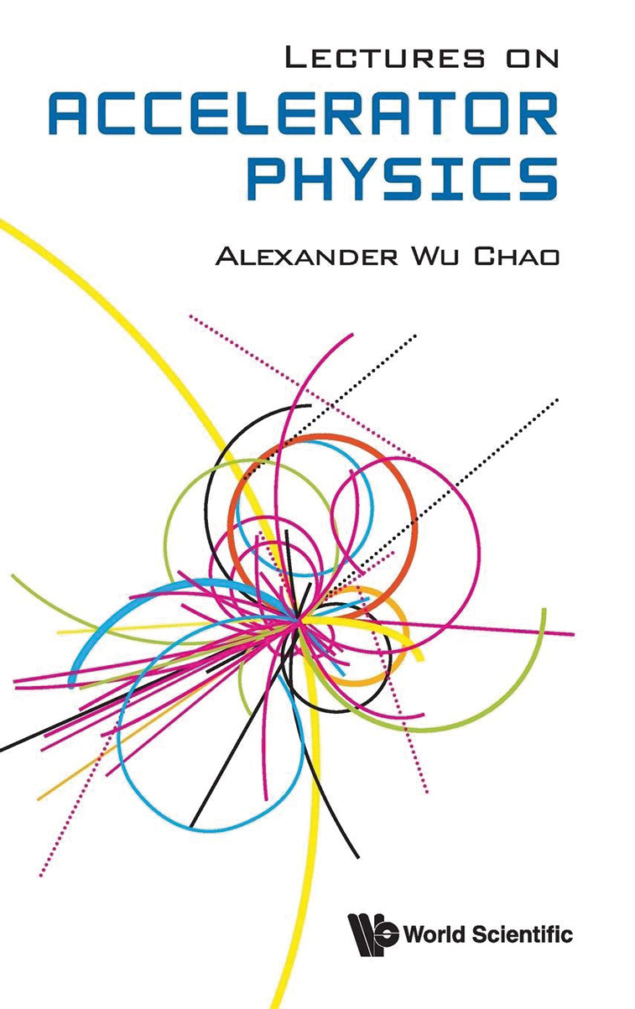Lectures on Accelerator Physics, by Alexander Wu Chao, World Scientific

Alex Chao, one of the leading practitioners in the field, has written an introductory textbook on accelerator physics. It is a lucid and insightful presentation of the principles behind the workings of modern accelerators, touching on a multitude of aspects, from elegant mathematical concepts and fundamental electromagnetism to charged-particle optics and the stability of charged particle beams. At the same time, numerous practical examples illustrate key concepts employed in the most advanced machines currently in operation, from high-energy colliders to free-electron lasers.
The author is careful to keep the text rigorous, yet not to overload it with formal derivations, and exhibits a keen sense for finding simple, convincing arguments to introduce the basic physics. A large number of homework problems (most of them with solutions) facilitate the stated aim to stimulate thinking. The variety of these is the fruit of extensive teaching experience. The book assumes only a basic understanding of special relativity and electromagnetism, while readers with advanced language skills will benefit from occasional remarks in Chinese, mainly philosophical in nature (translated in most cases). The present reviewer could not help wondering about the missed punchlines.
The discussion on “symplecticity” and Liouville’s theorem lets physics ideas stand out against the background of mathematics
Beginners and advanced students alike will find pleasure in striking derivations of basic properties of simple physical systems by dimensional analysis. Students will also find the presentation on the use of phase-space (coordinate-momentum space) concepts in classical mechanics capable of clearing the fog in their heads. In particular, an insightful presentation of transverse and longitudinal phase-space manipulation techniques provides modern-day examples of advanced designs. Furthermore, an important discussion on “symplecticity” and Liouville’s theorem – ideas that yield powerful constraints on the evolution of dynamical systems – lets physics ideas stand out against the background of formal mathematics. The discussion should help students avoid imagining typical unphysical ideas such as beams focused to infinitesimally small dimensions: the infamous “death rays” first dreamt up in the 1920s and 1930s. The treatment of the stability criteria for linear and non-linear systems, in the latter case introducing the notion of dynamical aperture (the stable region of phase space in a circular accelerator), serves as a concrete illustration of these deep and beautiful concepts of classical mechanics.
The physics of synchrotron radiation and its detailed effects on beam dynamics of charged-particle beams provide the essentials for understanding the properties of lepton and future very-high-energy hadron colliders. Lectures on Accelerator Physics also describes the necessary fundamentals of accelerator-based synchrotron light sources, reaching as far as the physics principles of free-electron lasers and diffraction-limited storage rings.
A chapter on collective instability introduces some of the most important effects related to the stability of beams as multi-particle systems. A number of essential effects, including head–tail instability and the Landau damping mechanism, which play a crucial role in the operation of present and future particle accelerators and colliders, are explained with great elegance. The beginner, armed with the insights gained from these lectures, is well advised to turn to Chao’s classic 1993 text Physics of Collective Beam Instabilities in High Energy Accelerators for a more in-depth treatment of these phenomena.
This book is a veritable “All you wanted to know about accelerators physics but were afraid to ask”. It is a compilation of ideas, and can be used as a less dry companion to yet another classic compilation, in this case of formulas: the Handbook of Accelerator Physics and Engineering, edited by Chao and Maury Tigner.





